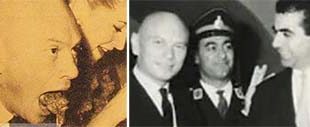His criminal instincts did not fade. In one of his final arrests, he was caught carrying five kilograms of opium under the Seyyed Khandan Bridge in Tehran. During questioning, an intelligence officer recognized him. His notoriety had preceded him once again.
Execution and Final Curtain
In the climate of post-revolutionary justice, particularly under the hardline supervision of Ayatollah Sadegh Khalkhali—known as the “Hanging Judge”—Baligh’s fate was sealed. He was sentenced to death for drug possession and executed on April 15, 1988, alongside six others, in a public execution on Nasser Khosrow Street. The location was symbolic, a few steps from the upper gate of Golestan Palace, once a symbol of power and Persian opulence.
Thus ended the life of Iran’s most colorful, cunning, and controversial criminal.
Legacy and Cultural Representation
Baligh’s story didn’t end with his execution. Over time, his life became the stuff of legend—half history, half myth. Iranian media and literature have referenced him, and in 1401 (2022–2023), the renowned filmmaker Masoud Kimiai produced a film loosely based on his life titled Khaenkashi.
The film, a stylized noir drama, reimagines Baligh as part of a gang attempting to rob the National Bank of Iran. However, their motive, far from selfish greed, is to fund Dr. Mohammad Mossadegh’s national loan effort. The film juxtaposes patriotism with criminality, turning Baligh into a Robin Hood-like figure, albeit fictionalized. While the narrative departs from reality, it underscores the magnetic draw of Baligh’s persona.
The film paints him and his gang—Shahrokh, Gio, Atlas—as complex characters operating under the shadow of imperialism and political conflict. Though Baligh never fought for Mossadegh or nationalist causes in real life, the connection serves to mythologize him further in the collective Iranian memory.

